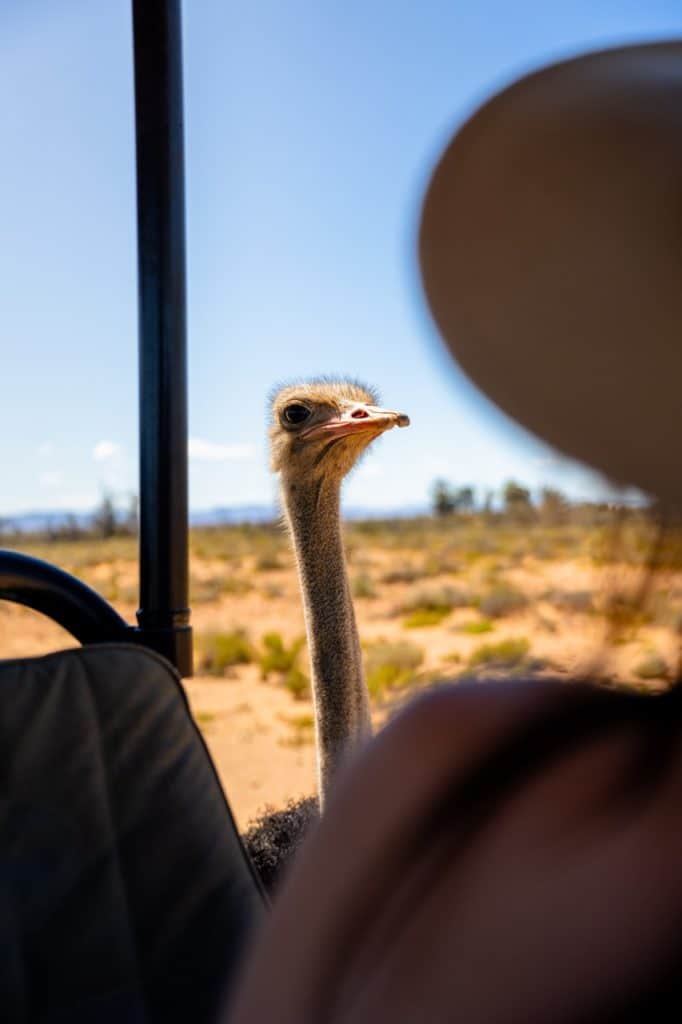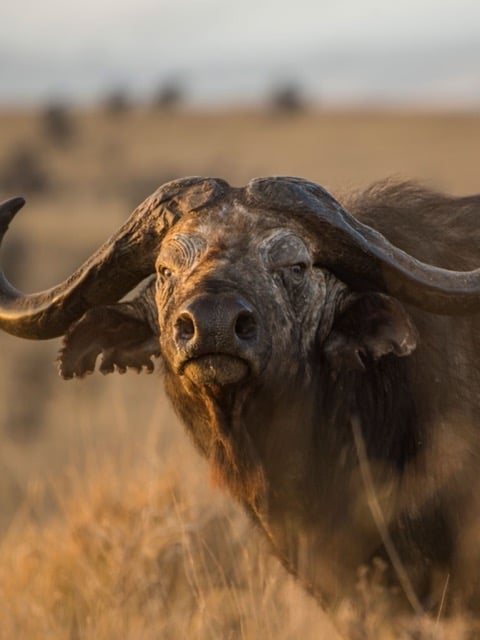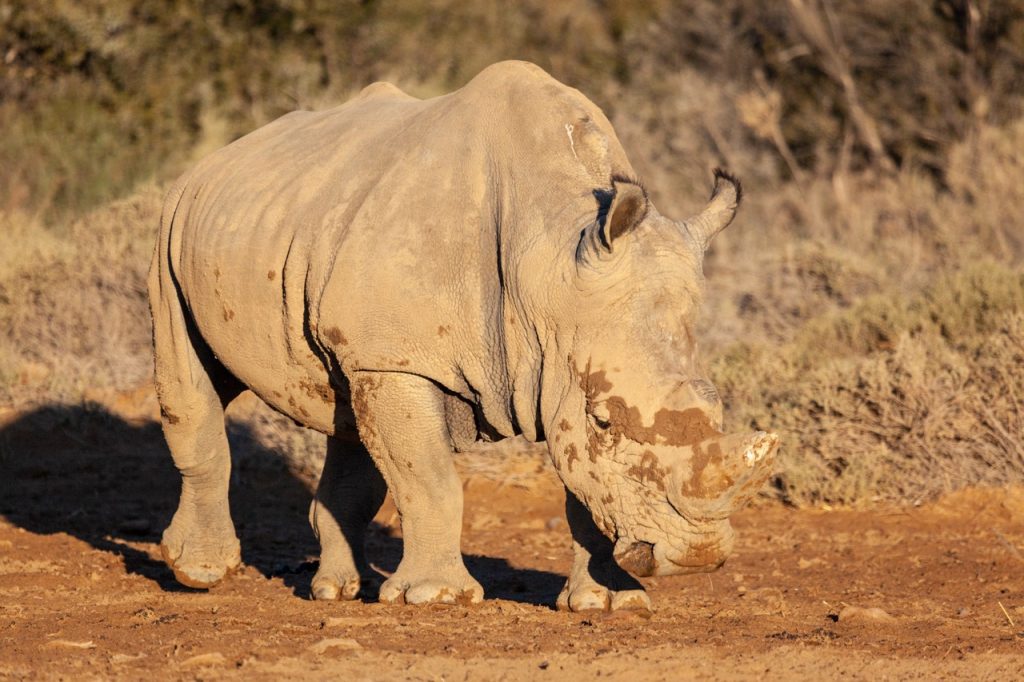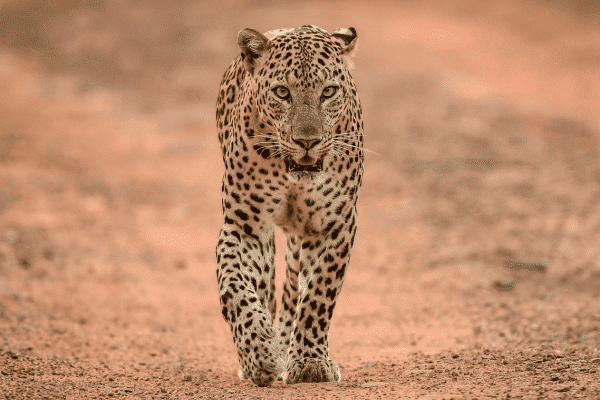See the Wildlife of the Karoo
Stretching across three provinces, the Great Karoo is an oasis of vast natural landscapes and untamed wilderness. The wildlife of the Karoo includes some of Africa’s most unique animals (like the cape fox, eland, caracal, springbok, meerkat, aardvark and cheetah), as well as other large game and the famous Big 5 animals (lions, elephants, buffalo, rhinos and leopards, giraffe, zebras, wildebeest, ostriches, and so much more.)
Discover the Western Cape's Karoo Game Reserves
Hundreds of years ago, the Western Cape was home to many large mammal species including predators such as the now-extinct cape lions, wild dogs, cheetah and hyaenas. The Western Cape’s natural wildlife and stunning fynbos biomes are some of the most unique and rich diversity hotspots in the world. However, many of the Cape’s wildlife species are still recovering from centuries of colonial expansion, land fragmentation, and trophy hunting.
The Big 5 Animals of Inverdoorn's Karoo Game Reserve
Inverdoorn Private Game Reserve is a sanctuary for wildlife in the Western Cape, with various animal rehabilitation projects and conservation programmes dedicated to restoring the Karoo’s natural wildlife heritage. From being part of the team that helped reintroduce South Africa’s Big 5 animals (lion, leopard, elephant, rhino, and buffalo) back into the Western Cape, to founding South Africa’s leading Karoo cheetah conservation centre, Inverdoorn’s wildlife conservation projects, habitat rewilding programmes, and animal rescue initiatives are just a small component of this 10 000 hectare Karoo Big 5 game reserve.
Cheetah Conservation
Protecting South Africa’s natural heritage and preserving the wildlife of the Karoo is at the heart of Inverdoorn’s Western Cape conservancy. Home to an award-winning cheetah rehabilitation project, the reserve is dedicated to rescuing, rehabilitating and releasing captive-bred cheetahs back into the Karoo wild.


Karoo Safari Guide
See the wildlife of the Karoo, only 2.5 hours outside of Cape Town. Our Big 5 safari booking guide, wildlife directory, Karoo seasons guide and safari packing guide will help you make the most of your Cape wildlife adventure as you explore and uncover the wonders of the Great Karoo.
The Karoo is a vast area that stretches from South Africa’s eastern coastline all the way to Namibia. Comprising of over 300 000 kms of diverse landscapes, including mountains, grasslands, renosterveld shrublands, semi-dessert plains and coastal fynbos biomes, the Karoo is regarded as a biodiversity hotspot.
Many animals and birds live in the Karoo, and sightings will vary depending on the time of year and region. Herds of springbok, gemsbok (or Oryx), black wildebeest, Cape mountain zebra, red hartebeest, black rhinoceros, white rhinoceros, cape leopards, eland, kudu, caracal, klipspringer, cheetahs, bat-eared foxes, black-backed jackal, ostriches, cape buffalo and (in the past decade) lions, can be sighted in the Karoo.
Yes, there are lions in the Karoo. However, the lions you see in the Karoo today are part of an extensive repopulation programme which saw the return of lions to the Western Cape region since the extinction of the Cape Lion more than two hundred years ago.
Lions have only recently been introduced back into the Karoo. With notable lion conservation efforts at Inverdoorn Private Game Reserve, Aquila Private Game Reserve, and the Karoo National Park.
Cheetahs went extinct within the Karoo and Eastern Cape due to extensive hunting and unchecked wildlife poaching during the 19th and 20th century. However, today, various conservation initiatives and breeding projects have witnessed the gradual return of cheetahs to the Karoo. Game reserves, like Inverdoorn Private Game Reserve and the Karoo National Park, are home to the largest cheetah populations in the Karoo.
Recognised as the leading cheetah rehabilitation programme in the Western Cape, Inverdoorn’s cheetah conservation efforts have overseen the successful rescue of over 19 previously captive-bred cheetahs back into the wild.
Unlike a true desert, the Karoo receives occasional splashes of rain, enough to sustain a fascinating array of drought-adapted plants. Plants like the spekboom, is a resilient succulent with water-storing leaves, allowing it to thrive in the dry spells between rains. Fynbos, an endemic South African shrub-land known for its incredible diversity, also thrives here.
These hardy plants aren’t just survivors; they’re intricate and successful ecosystems in miniature. The spekboom’s thick leaves provide a vital food source for browsers like antelope, buffalo and rhinos. Fynbos vegetation and drought-hardy trees, which grow along the river banks and watering holes, also offer shelter for a variety of birds, reptiles, insects and small mammals like meerkats, cape hares, mice and mongoose, creating a vibrant ecosystem despite the harsh climate.
And, where there are plants and herbivores, predators are sure to be found. Resilient carnivores, like the cape leopard, brown hyena, caracal, cheetah and cape fox, can are common sightings in the wildlife of the Karoo.
The Karoo is home to various small predators, including wild cats, hyenas, foxes and other small carnivores. Common predators in the Karoo are cheetahs, caracals, brown hyenas, black-backed jackals, cape foxes, meerkats, yellow mongoose, chacma baboons, the cape leopard and, in recent years, lions.






